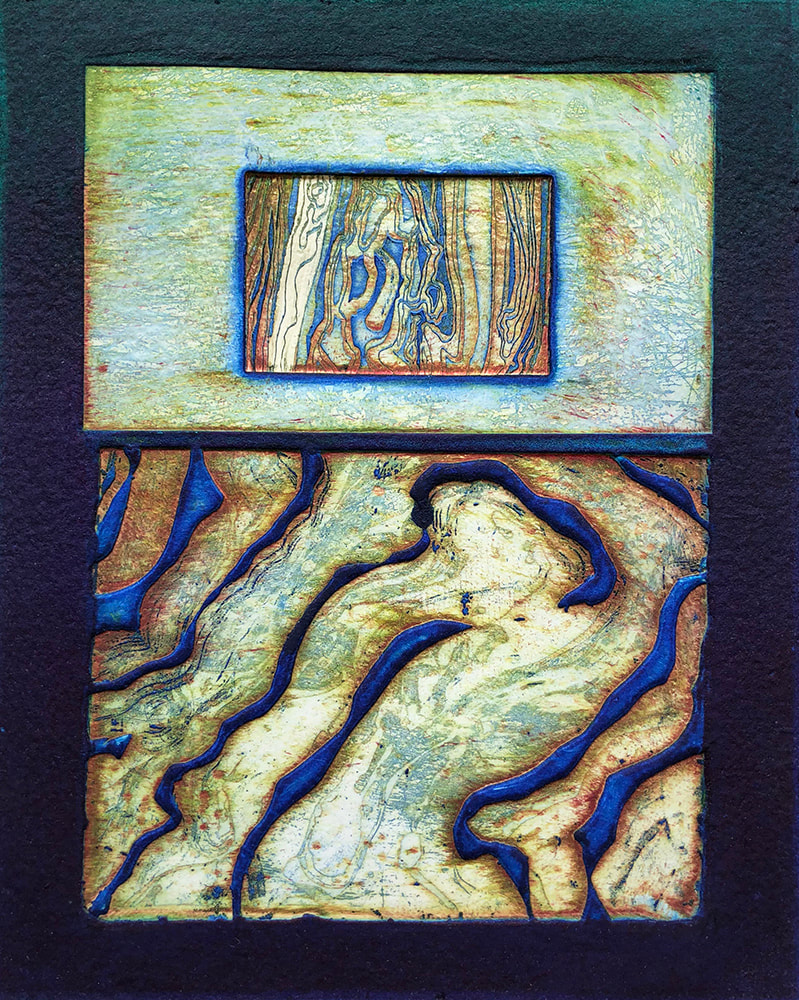Collagraph
A collagraph plate is a collage of various print techniques and materials and it can be printed as a relief print or intaglio print. A collagraph print plate is made by gluing thin, found objects of different shapes and sizes to a base plate. Another approach involves building lines and textures by painting a plate surface with modelling material such as acrylic gel, white glue, modelling paste, or gesso. Another collagraph method involves making an intaglio-type plate that is composed of fabric and acrylic medium combined.
|
The types of objects you can find, alter, and use are infinite. The only criteria to adhering an object to a plate is that it must be extremely thin – typically less than 1/8th of an inch thick. Each level of applied material should also be kept within this height limit or undue stress may be placed upon the print paper. Deeper embossments can be created by incrementally building up the layers, much like a staircase. Once the collaged plate is dry it is coated with a layer of acrylic gesso or medium to seal and protect the surface. It is then inked, damp paper applied and put through a printing press.
Some of the first collagraph prints were created in the 1930s when famous artists such as Georges Braque, Juan Gris, and Pablo Picasso experimented with combining collage and printing techniques. |
The Castle Gallery, Inverness, is renowned for its extensive collection of handmade prints from artists who are amongst the leading exponents of original prints in the UK, including many who have been elected to the Royal Society of Painter-Printmakers. We promote original handmade prints because we believe in their superb craftsmanship, aesthetic value and integrity.
